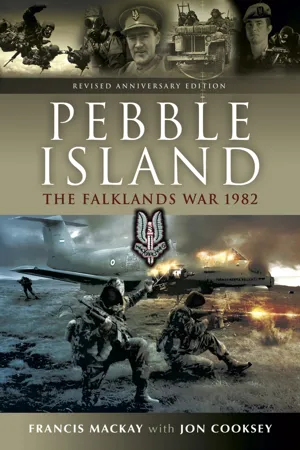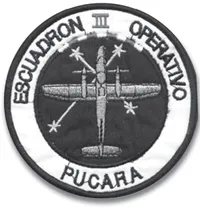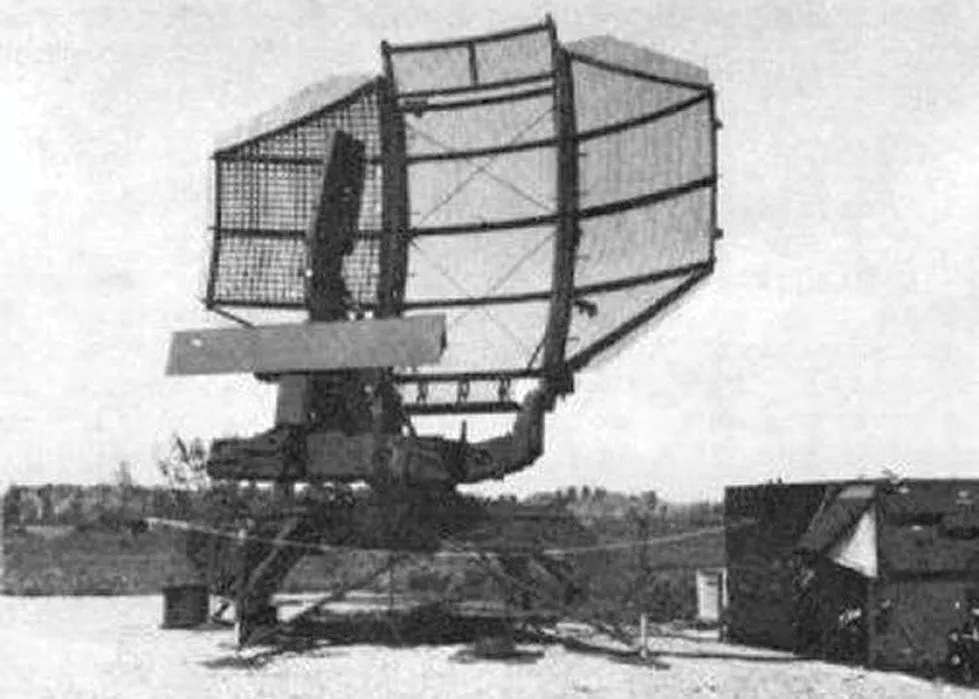![]()
FALKLANDS PEBBLE ISLAND
THE THREAT
A mphibious warfare operations require, amongst other things, exceptionally careful planning and accurate intelligence. Operation ROSARIO was no exception. The Argentinian planning staff developed an interest in Pebble Island as they reasoned it would make a useful Forward Operating Base (FOB) – not only for themselves but also for the British if they gained control.
Apart from planning the invasion the COMIL considered possible British responses, including an amphibious counter-attack; the Royal Navy certainly had the necessary experience, training and equipment. This notion was initially discounted by the Junta, and hence by the COMIL. However, several senior officers in the planning group, graduates of command and staff colleges at home and abroad, argued the case for contingency planning. Eventually their views were reluctantly accepted by the Junta, and a secret post-invasion defence plan, known as La Planication de Operaciones 2/82 Mantenimiento de la Soberania, was discretely prepared.
Some Armada officers were convinced that, given the distance between the Falklands and the UK, the British would try to establish a FOB on South Georgia or the Falklands. This ‘stone frigate’ could provide supply, communications and maintenance sites. Also, if sited on the Falklands, it could house an airfield for airdefence and attack aircraft and helicopters in addition to a lair for raiding forces; a concept tested by NATO for the forward defence of sensitive coastal locations.
Wideawake Airfield, Ascension Island.
From the British point of view such a base could be used as a political bargaining chip. Island-based fighter aircraft, (Sea Harriers or RAF Phantoms), surface to air missiles, Royal Navy ship-borne Sea Dart and Sea Slug and RAF air-transportable Bloodhound could all be used to interdict Argentinian air lines of communication from the mainland while British submarines neutralised the sea lines of communication, effectively marooning the Falklands garrison. The Argentinians knew that RAF Harrier squadrons in Germany frequently exercised from dispersed hides. They also knew that Hercules squadrons habitually operated from rough airstrips around the world. And, if fitted with US-style refuelling probes for use with Victor K2 tankers, RAF Hercules could supply the FOB from Ascension Island.
FOBs ON WEST FALKLAND
The idea of establishing a FOB on West Falkland or an outer island occurred to at least one British officer before the landings at San Carlos. Admiral Woodward wanted to have a large airfield for Hercules transports, Phantom air-defence fighters, Harrier ground and maritime attack aircraft, and various types of helicopter.1 A number of locations on the Falklands seemed suitable especially that of Pebble Island. The Admiral also considered establishing a special forces base on Kidney Island, close to Stanley although his advisers dissuaded him from pursuing those ideas. 2
However, Special Boat Squadron (SBS) patrols manned observation posts (OPs) across the Falkland group during the campaign. These included Carcass Island, west of Pebble - named after a RN ship which had surveyed it in Nelson’s time and aboard which Nelson had himself served in 1776 - and even the remote Weddell Island in the far south east, just in case the enemy tried to establish FOBs on them. 3
A British FOB would pose a serious problem to the Argentinians, who also needed one on West Falkland as a radar site. Irrespective of any British counter-offensive the Argentinians intended to extend their national Airspace Surveillance and Air Traffic Control system to cover the ‘reintegrated’ province of the Islas Malvinas. Immediate post-invasion cover would be provided by a mobile unit, Grupo 2 Vigilancia y Control Aereo. It had been formed in 1980 as part of an Escuadron Aereos Moviles, following a period of tension, verging on transition to war, with Chile, over control of three islands in a seaway between the two nations. The highly mobile Grupo could ostensibly control air operations by the Escuadron from any location in southern Patagonia/Tierra del Fuego. However, as the Beagle Channel event took place in 1978 the Escuadron was probably formed with the Falklands in mind. (Argentina laid claim to all of the huge island of Tierra del Fuego as well as the Falklands, South Georgia and the South Sandwich Islands, hence the existence of four stars on some military patches and badges.)
FAA Pucara Squadron arm patch.
The Grupo included not only a surveillance radar unit but also a Fighter-Control Station (Estacion de Interceptacion, or EI) and a Centro de Informacion y Control (CIC). The need for radar on West Falkland became more urgent when, during planning for post-invasion defences, it became obvious that the hills to the north and west of Stanley would restrict radar reception from equipment anywhere in the town. Stanley’s modest road network was the only way of moving and mounting the Argentinians’ heavy US radar sets and generators. The Grupo was equipped with Westinghouse TPS-44 and TPS-43 radar systems, each with a range of about 150 miles. If sited around Stanley airfield the hills would restrict cover to a 10°-210° arc, and the low elevation of the only accessible sites would restrict the range to 130 miles to the north-east and east, but only 45-80 to the south due to more hills. That left an uncomfortably large sector uncovered for air-traffic control purposes and also left it open to enemy incursion. The ideal solution was to place a radar site on the north coast of West Falkland, preferably in a FOB.
In the event of a British counterstroke the FOB could be protected by mobile surface to air missiles such as the Infanteria’s British-built Tigercat and the FAA and Ejercito’s radarcontrolled anti-aircraft guns. The FOB could also have an offensive role, accommodating Armada Fast Attack Craft, and special forces, and light reconnaissance/attack aircraft and helicopters from all of the armed and protective services. It would, however, have to be protected by a strong garrison, covered by minefields and barbed wire entanglements and equipped with artillery, mortars and machine guns firing along fixed lines to cover beaches and possible drop zones (DZs) or helicopter landing sites (LZs). The FOB could also be sheltered by an air defence umbrella based on strengthened and lengthened runways at Stanley and covered by a surveillance radar set. Thus a FOB on the north coast of West Falkland was an attractive proposition to some Argentinian planners, although all hoped it was one which would not be required to be used.4
APPROXIMATE AREA OF RADAR SHADOW
Armada Argentina Intrepida Class Fast Attack Craft. Armada Argentina
The ideal location, for Argentinian or British forces, would be a settlement with an airstrip capable of expansion to accept FAA Dagger/RAF Phantom air-defence fighters and Hercules transports. (The FAA assessed five landing sites as suitable for Hercules operations; Stanley and Goose Green on East Falkland, and Dunnose Head Farm, Keppel and Pebble Islands on West Falkland.) The ideal location would also need to have a pier, or at least a sheltered bay with an open beach, to enable landing craft or amphibious vehicles to land supplies. Ideally it should also possess a settlement providing a basic logistical infrastructure such as electricity, a pure water supply, shelter, telephone lines and access to fresh meat. In addition it would be close to high ground for siting radar, signals equipment and manned observation posts.
Pebble Island ticked all the boxes required by both sides. The Argentinians therefore decided that once Operation ROSARIO was complete, Pebble Island should be occupied as a matter of urgency.
![]()
FALKLANDS PEBBLE ISLAND
PEBBLE ISLAND
The Falkland Islands lie some four hundred miles east of Argentina, and eight thousand south of the United Kingdom. There ar...








